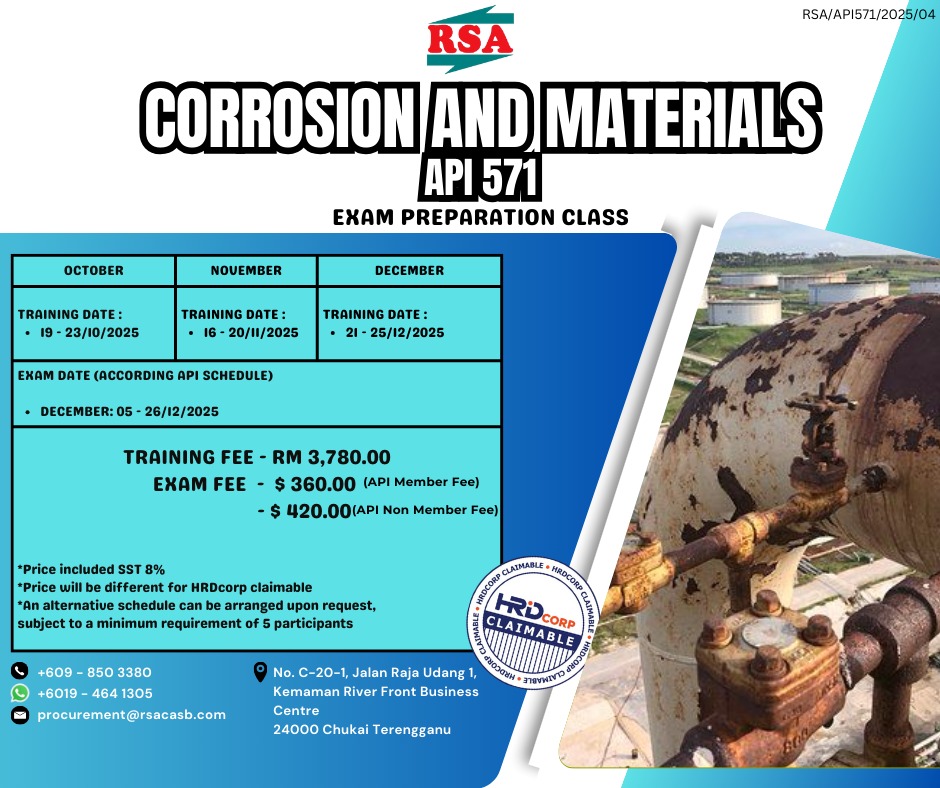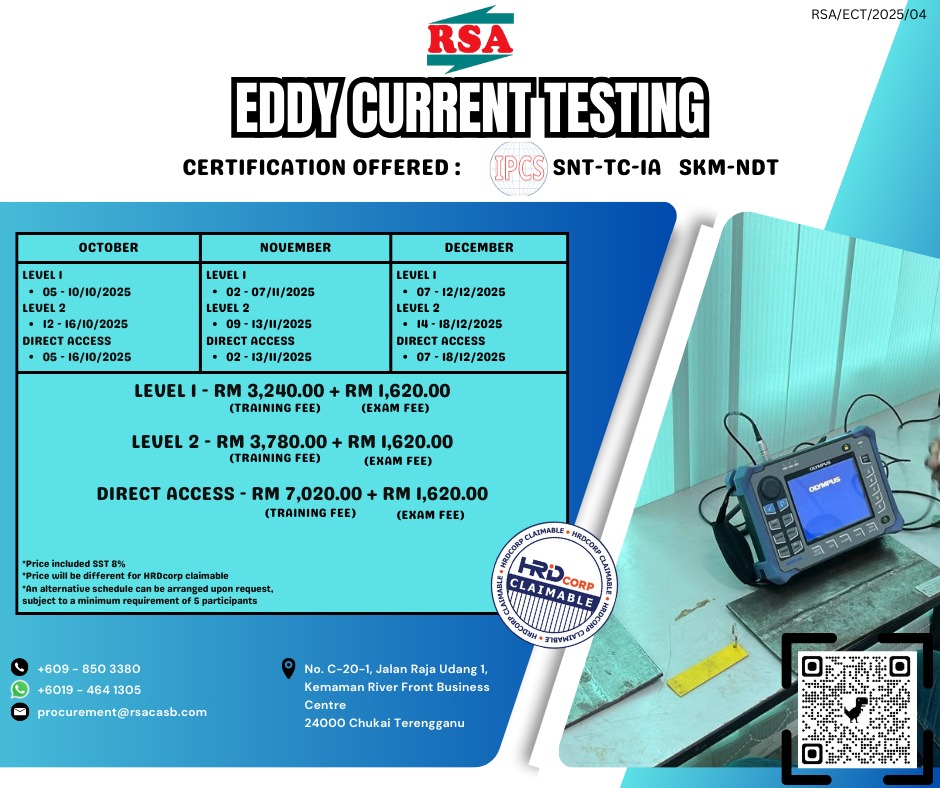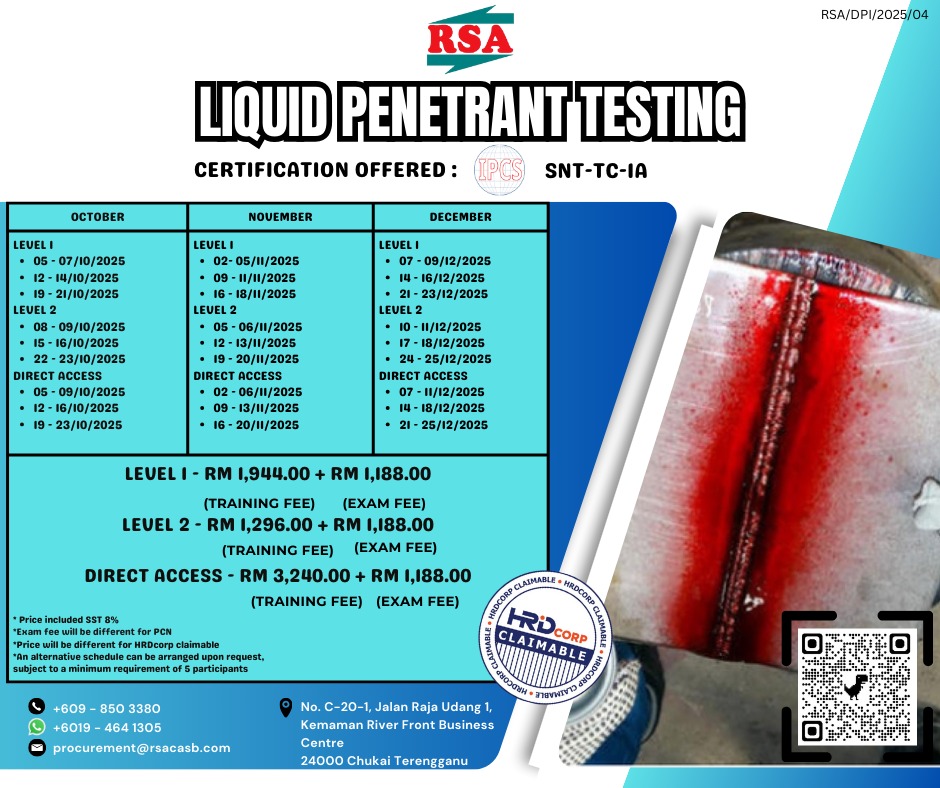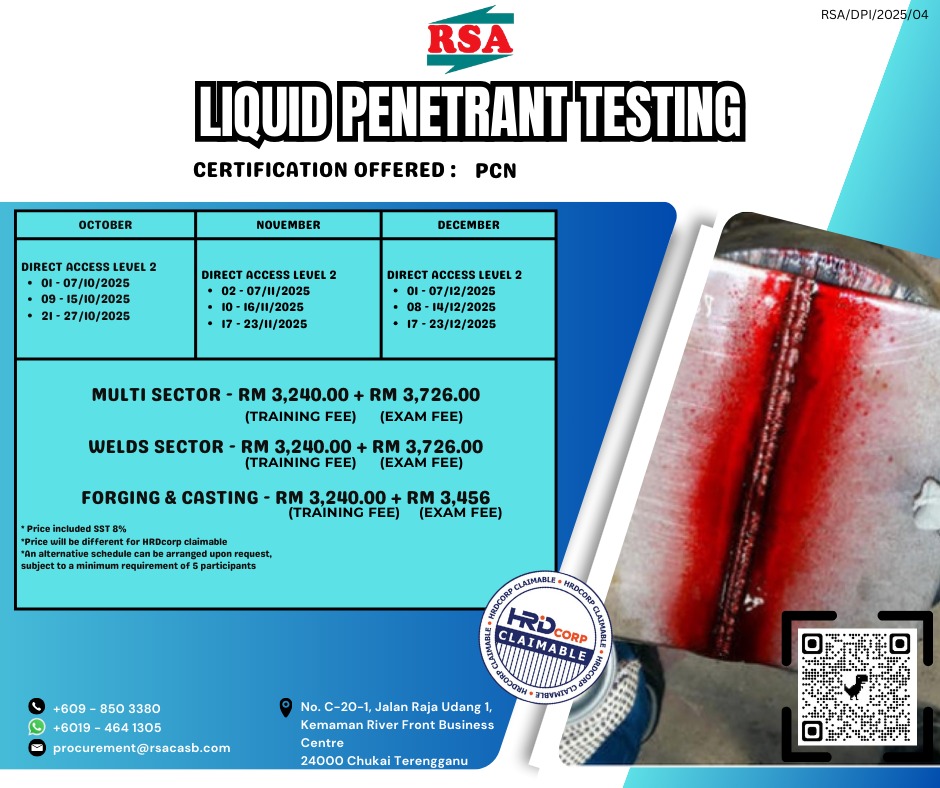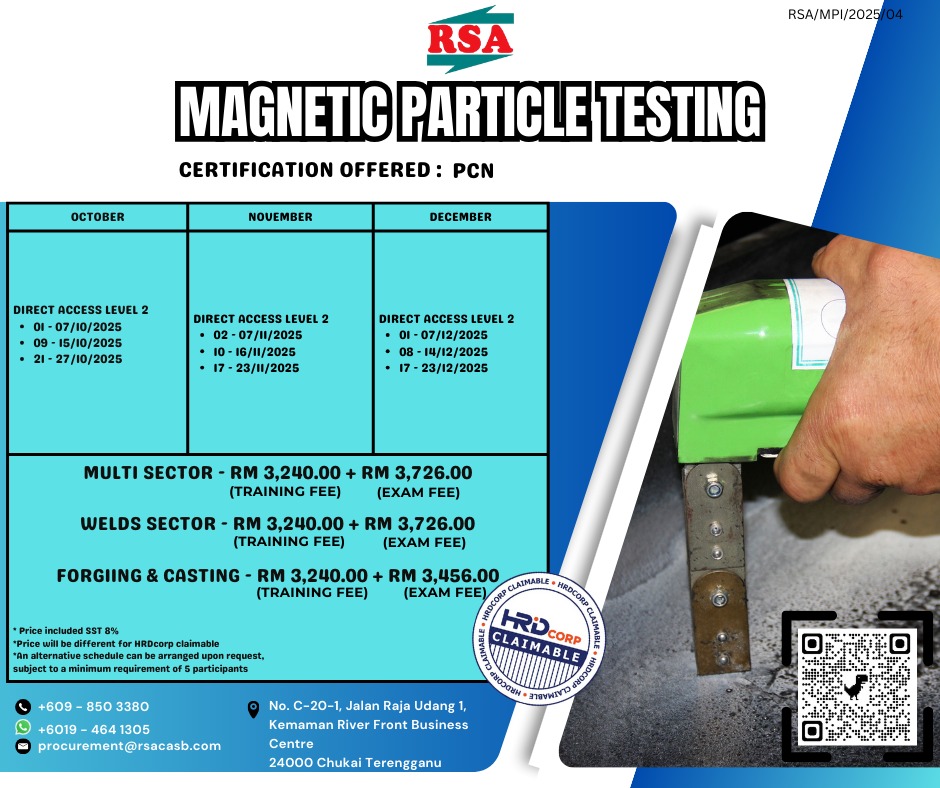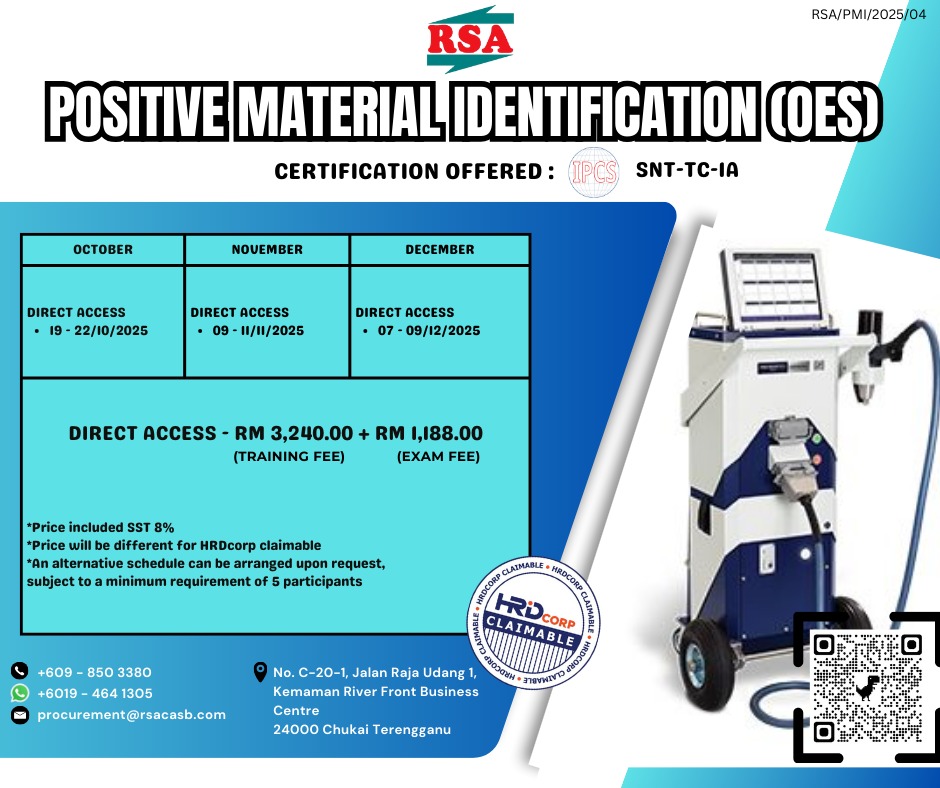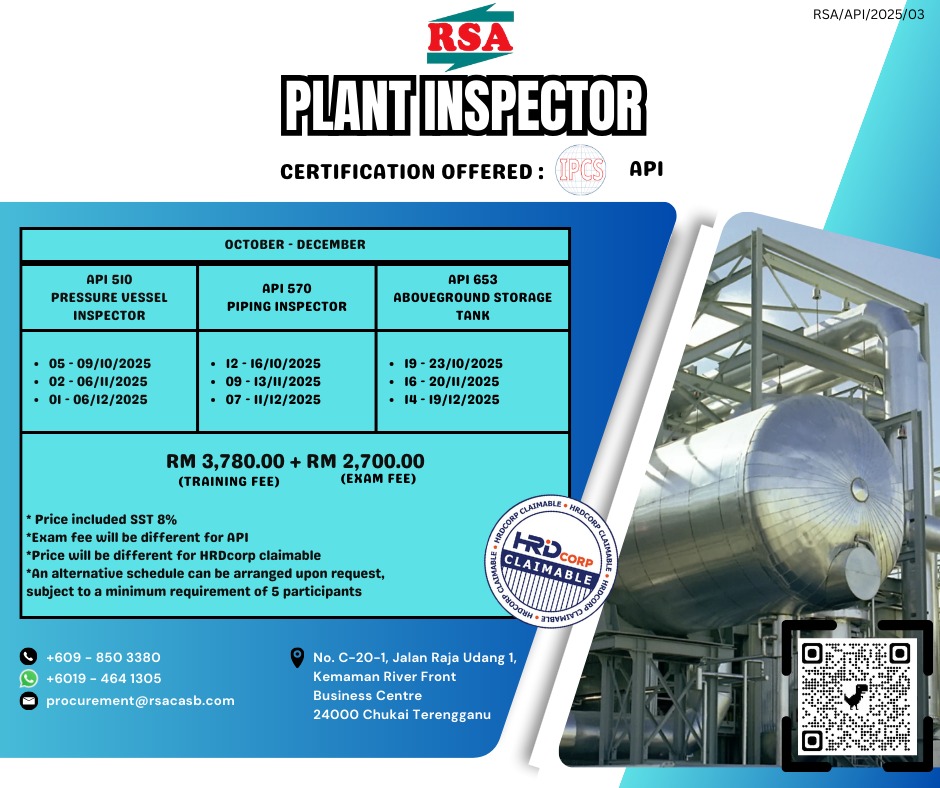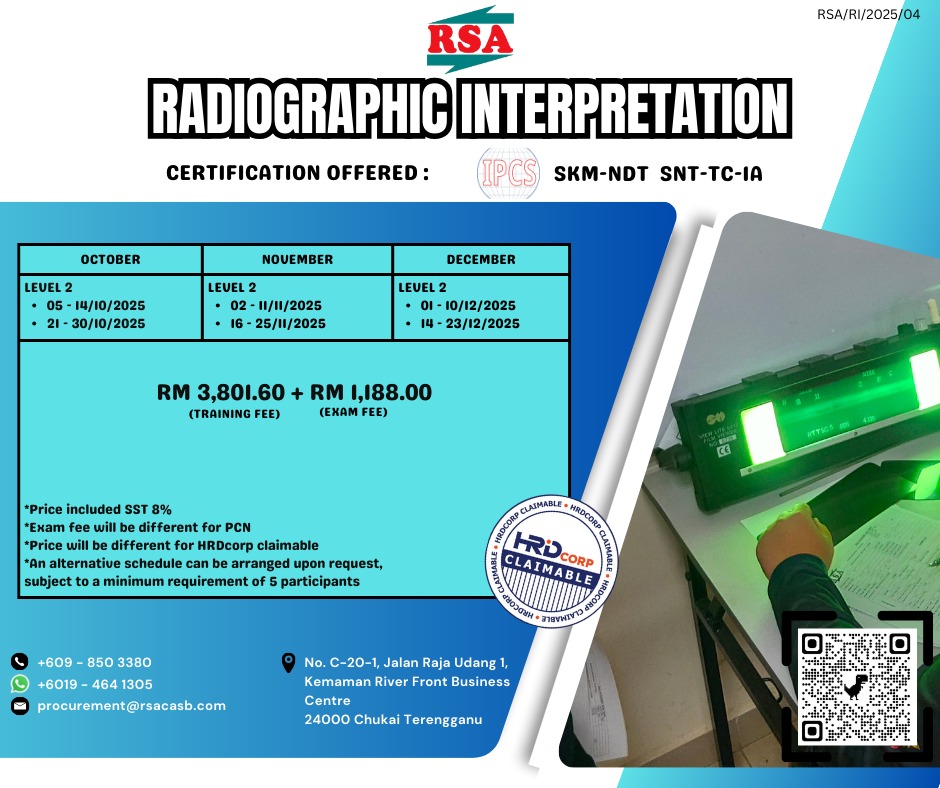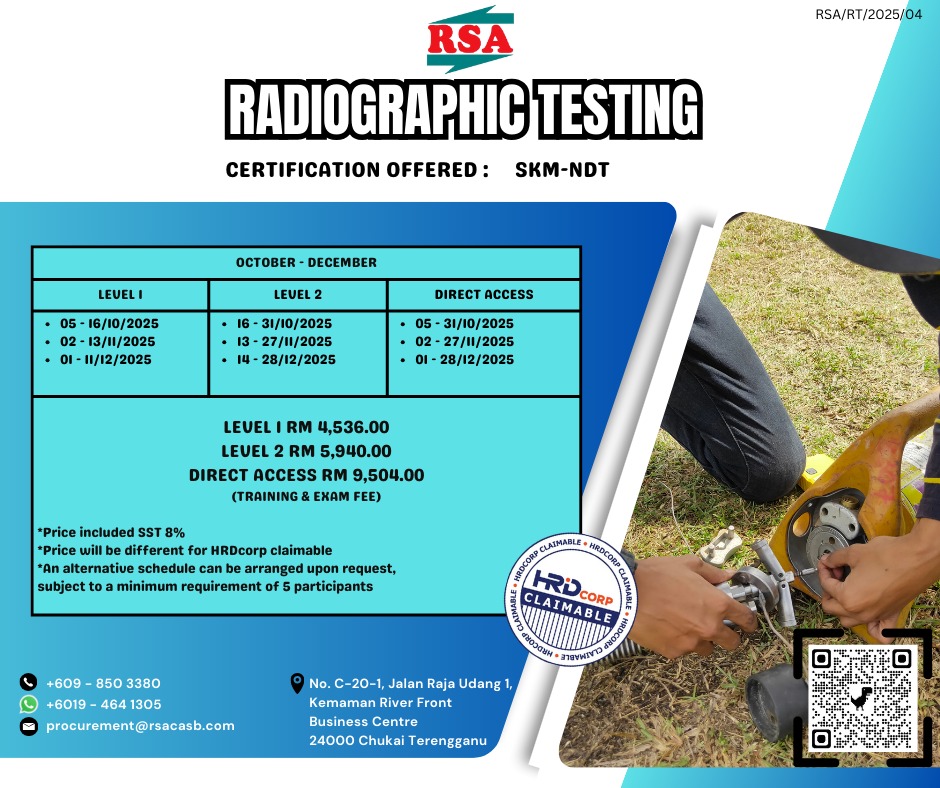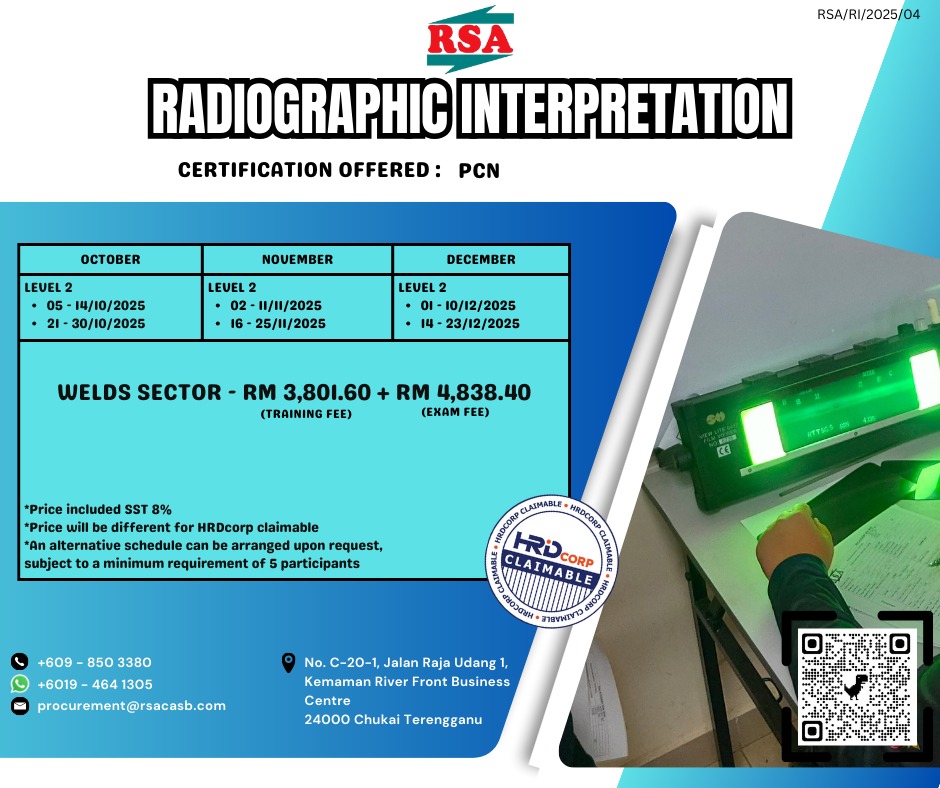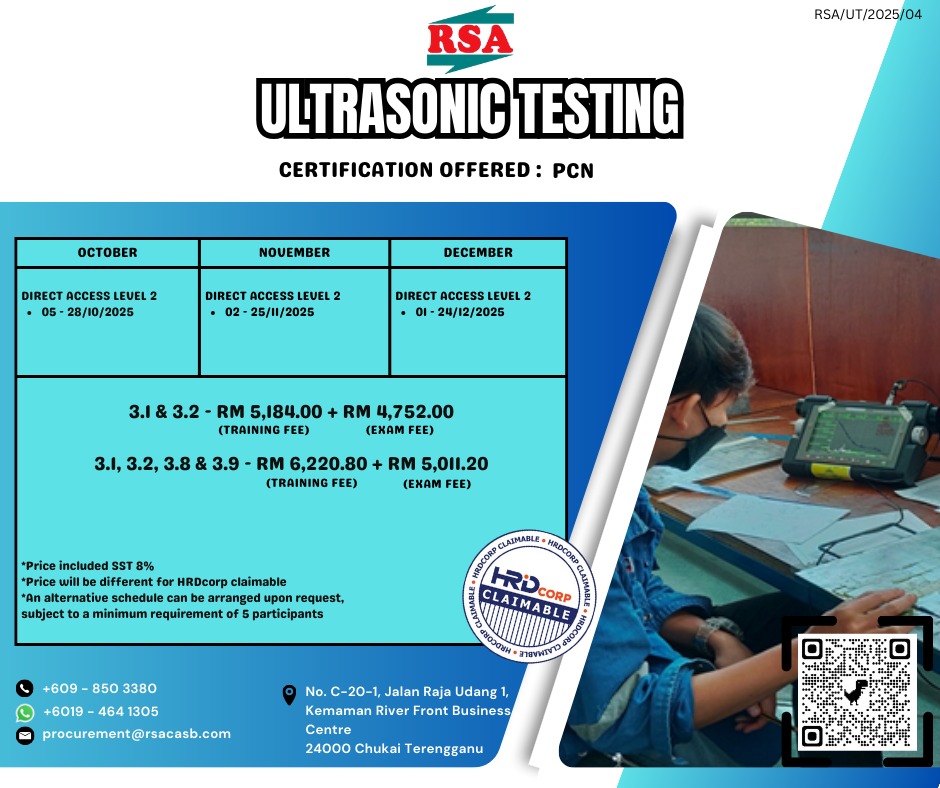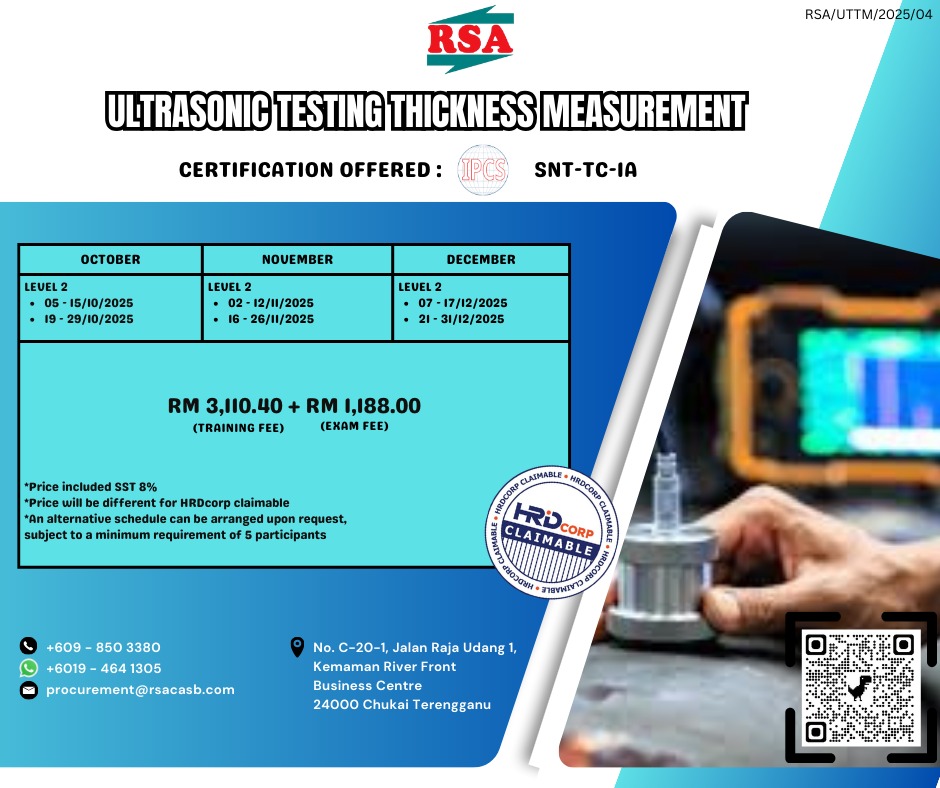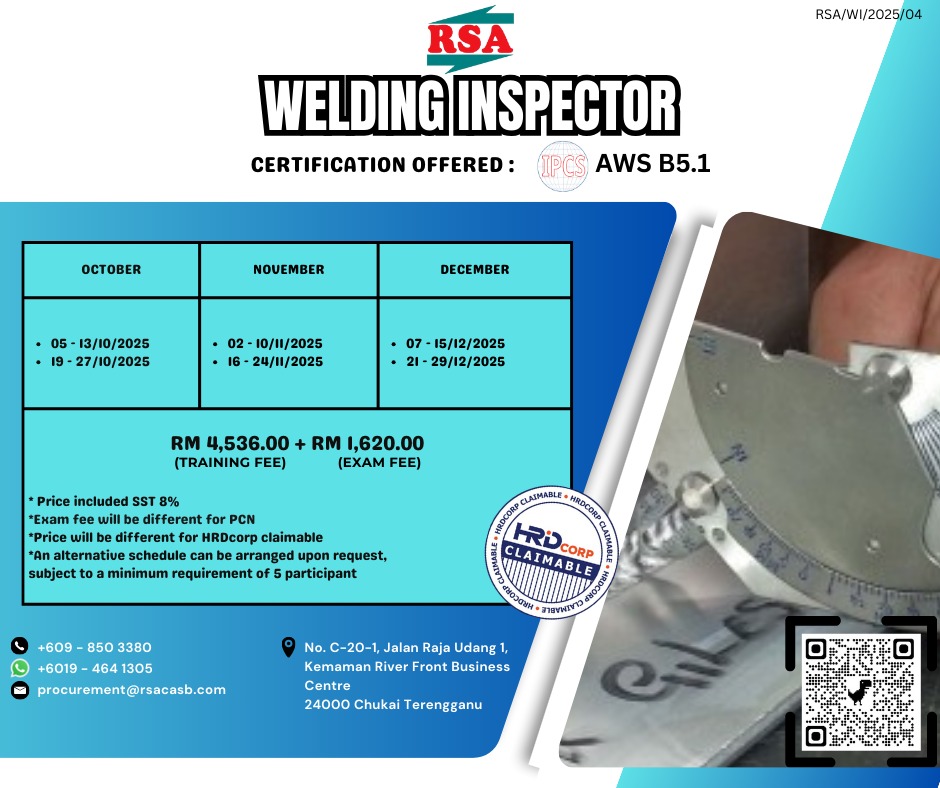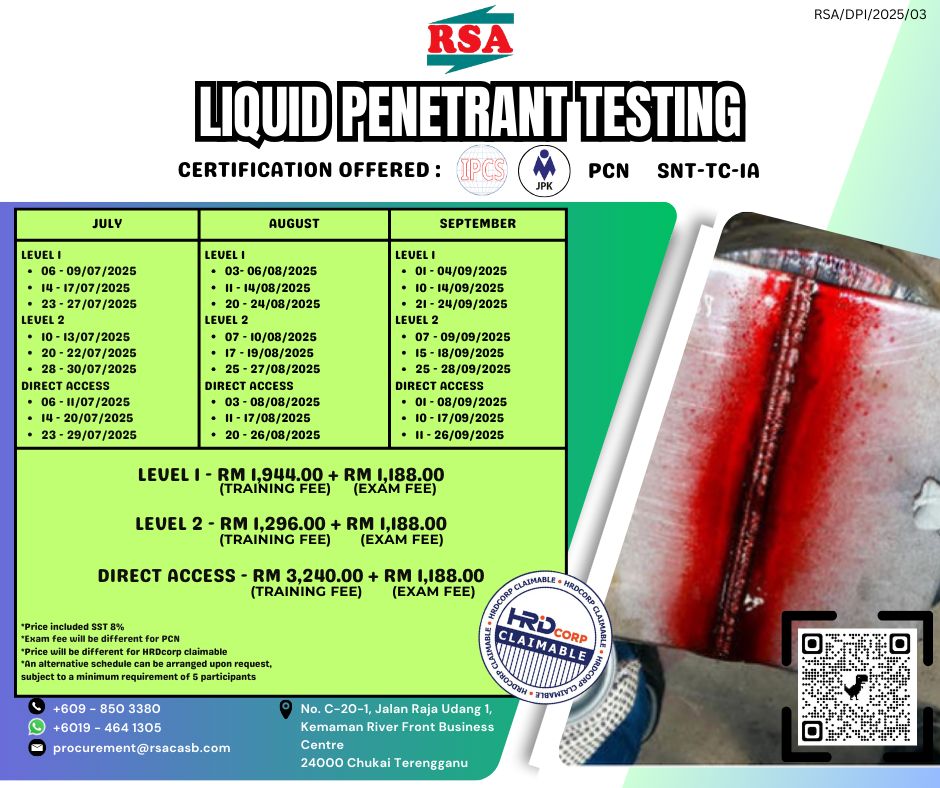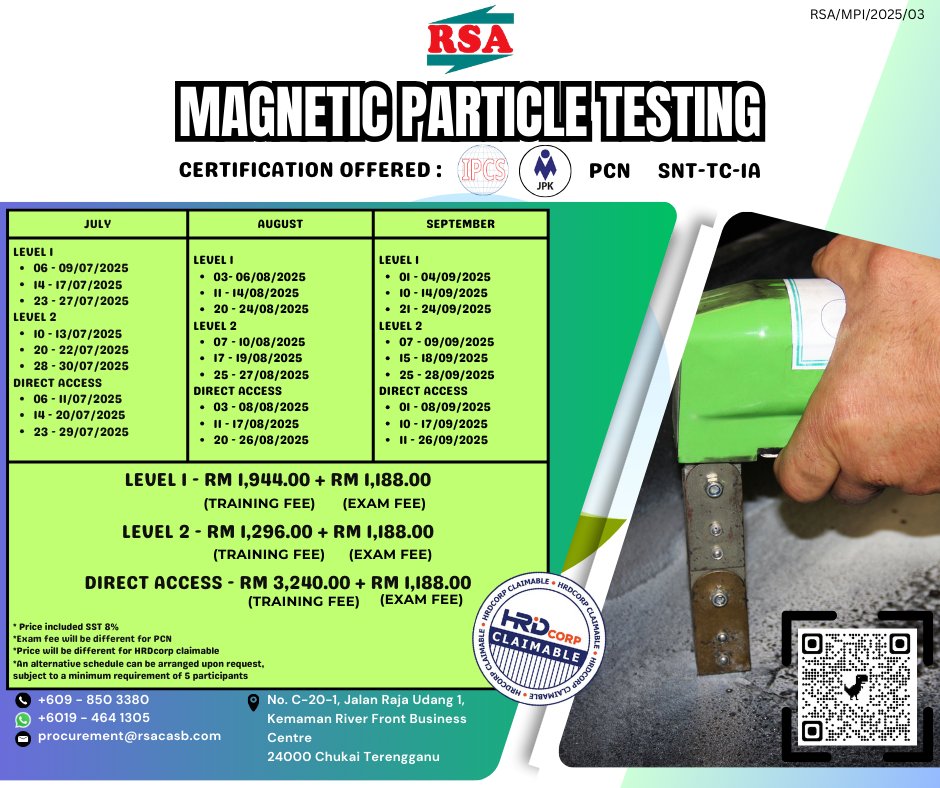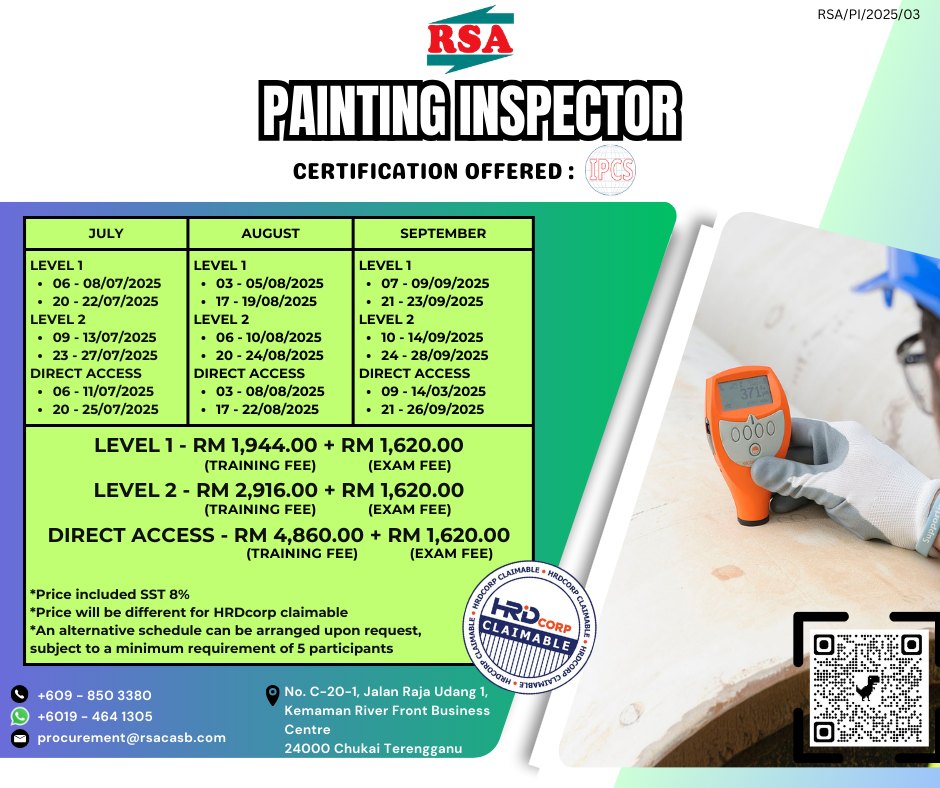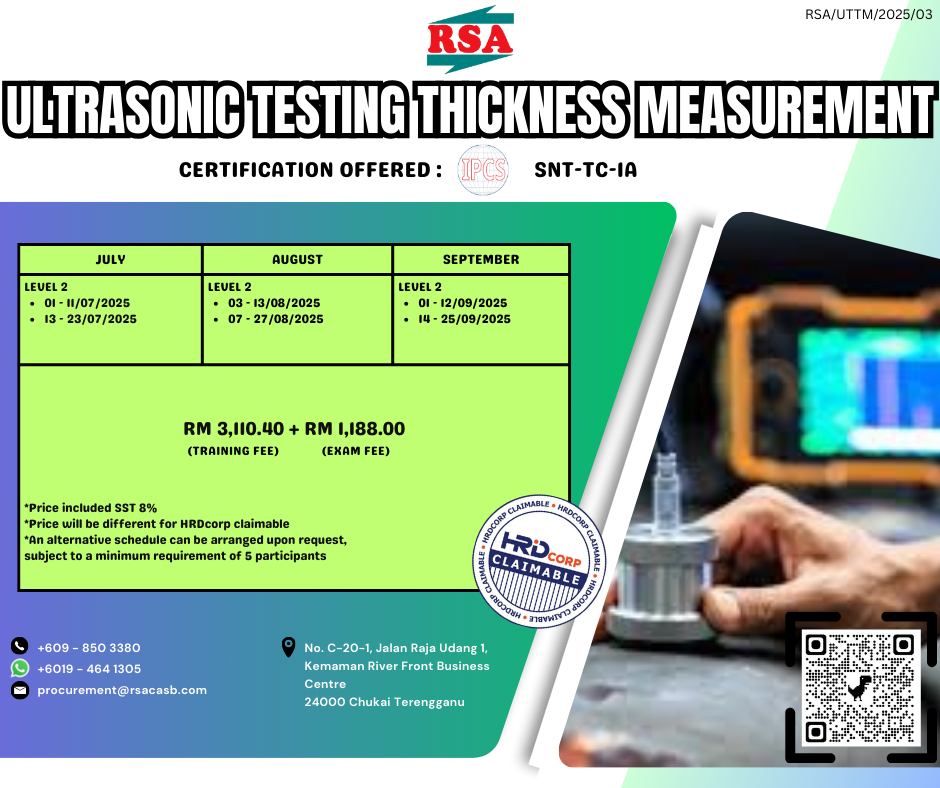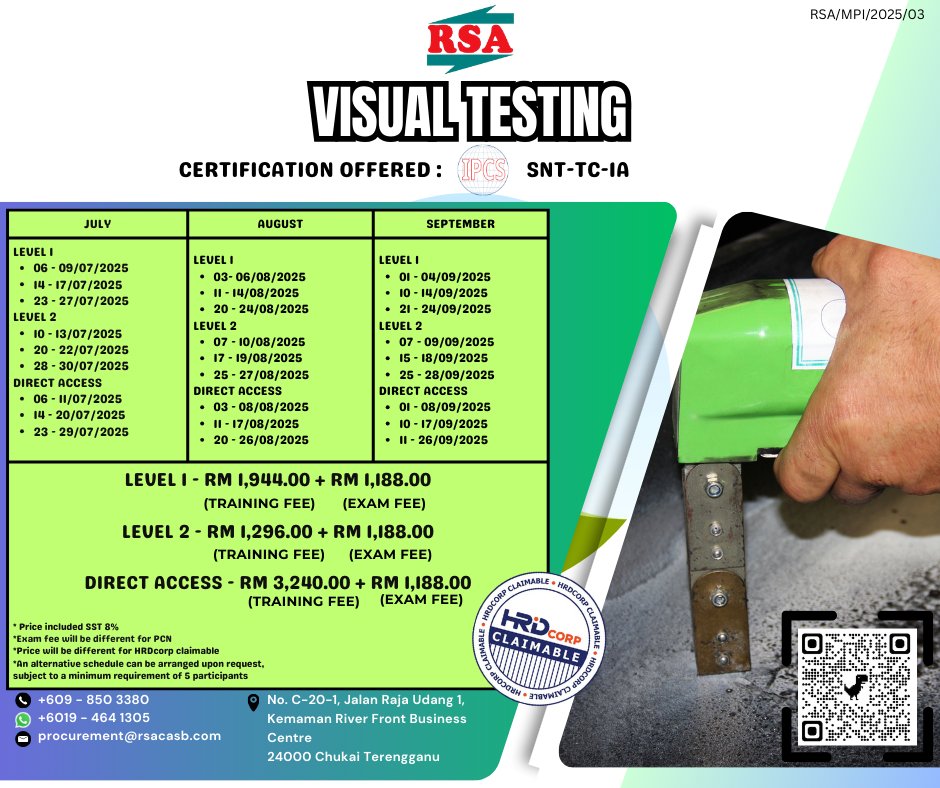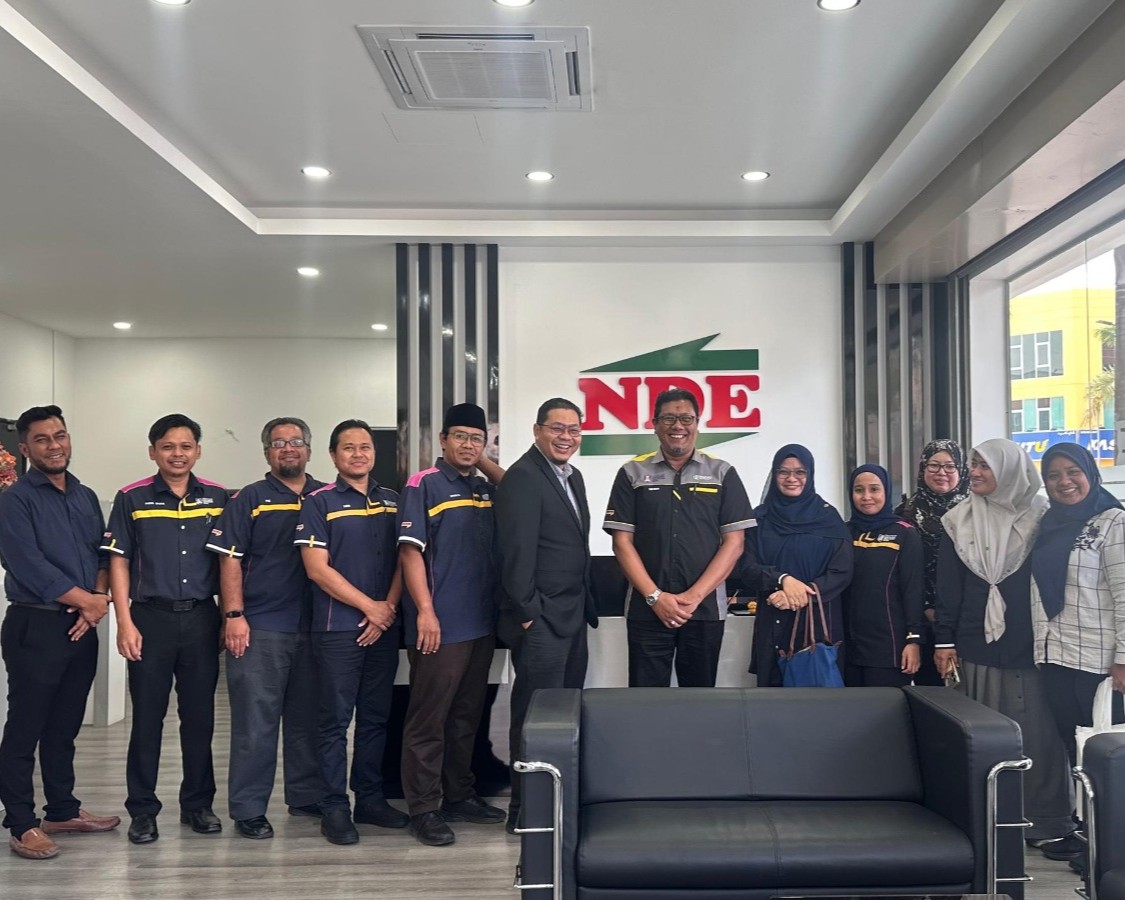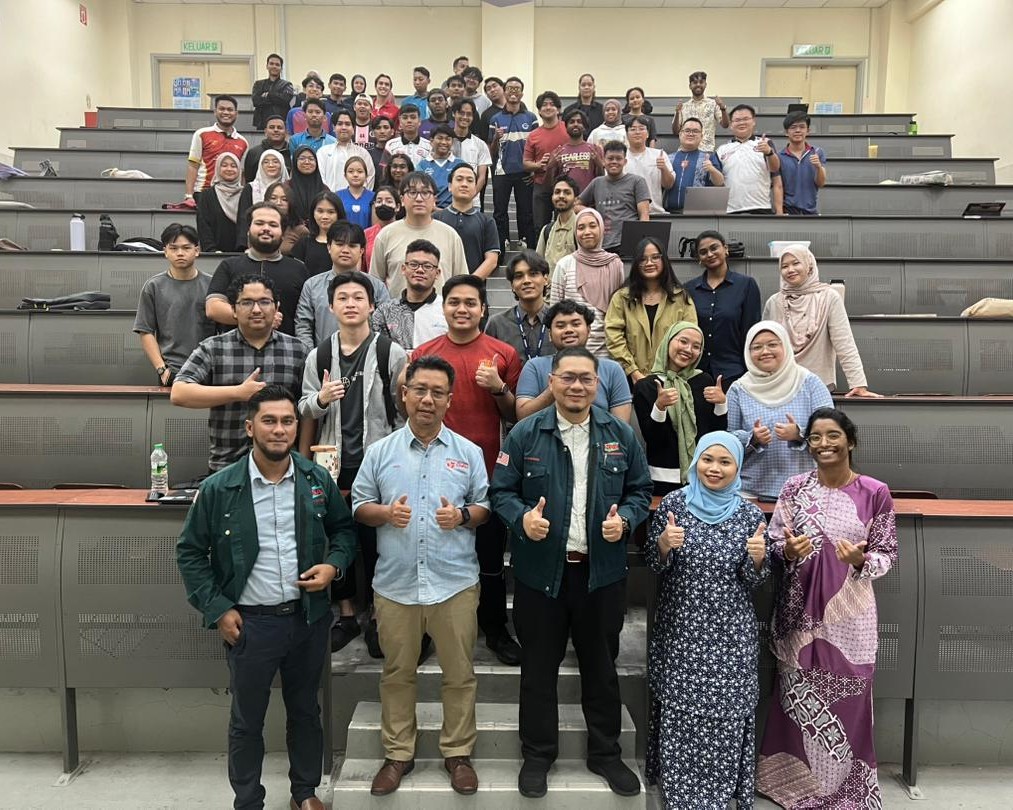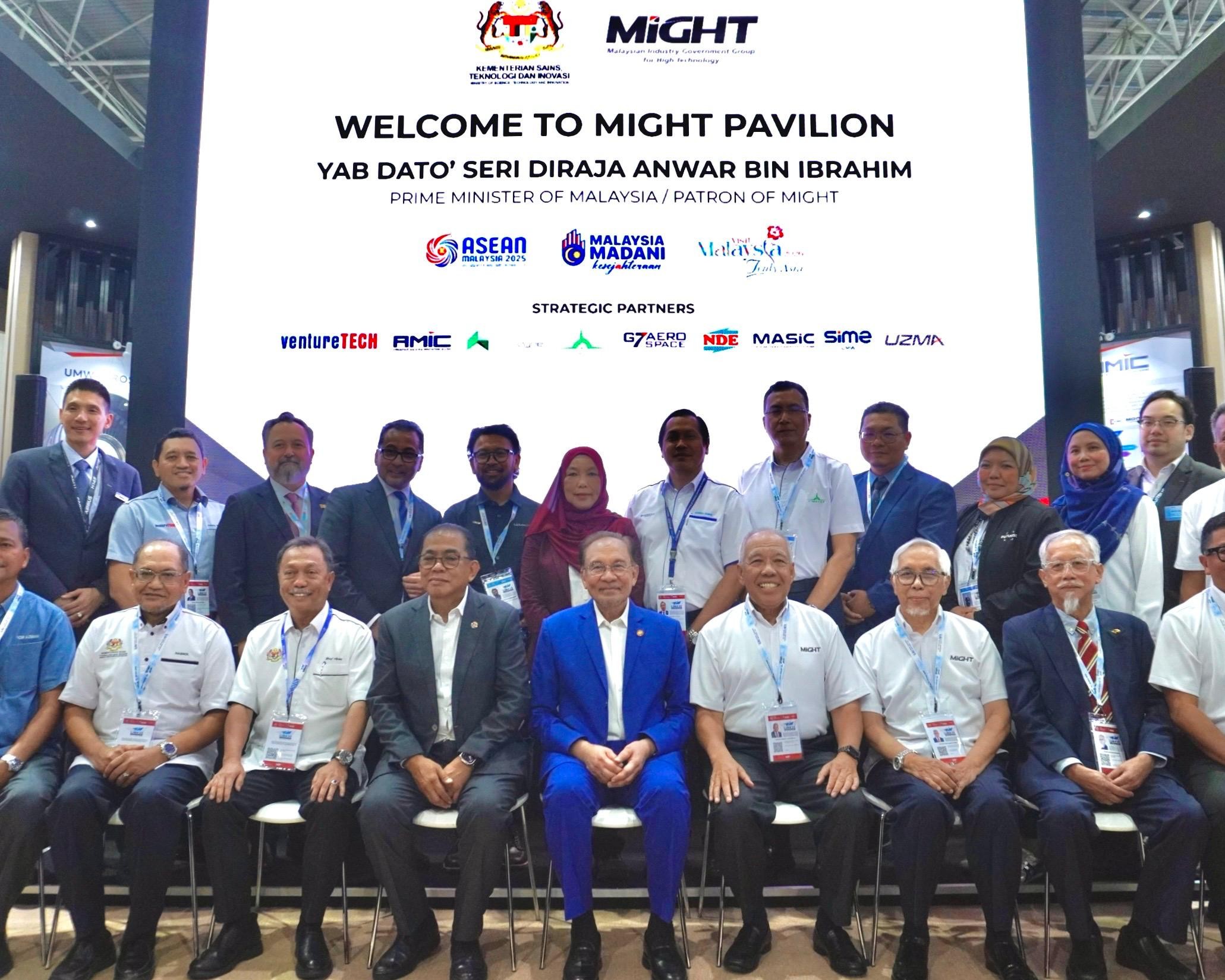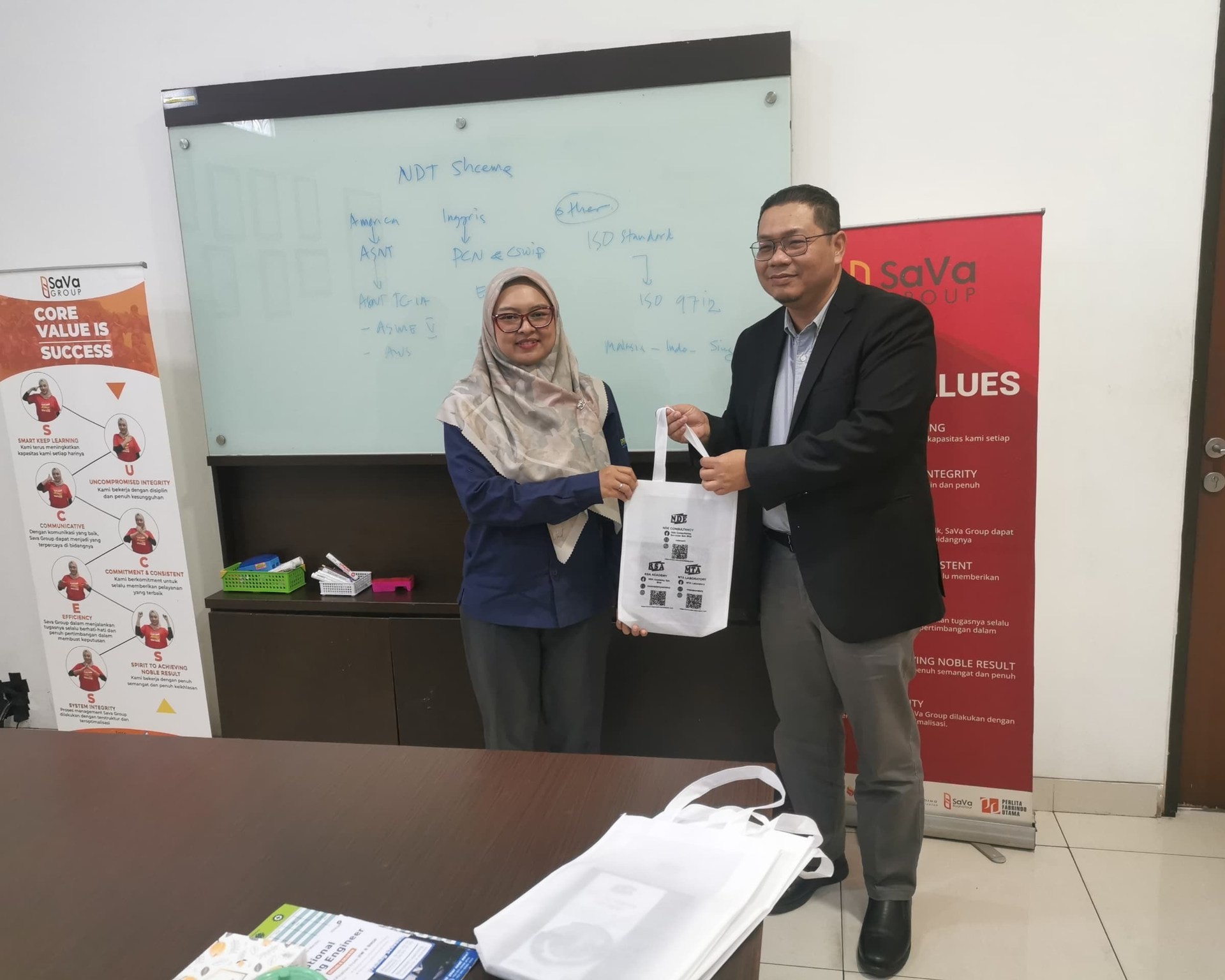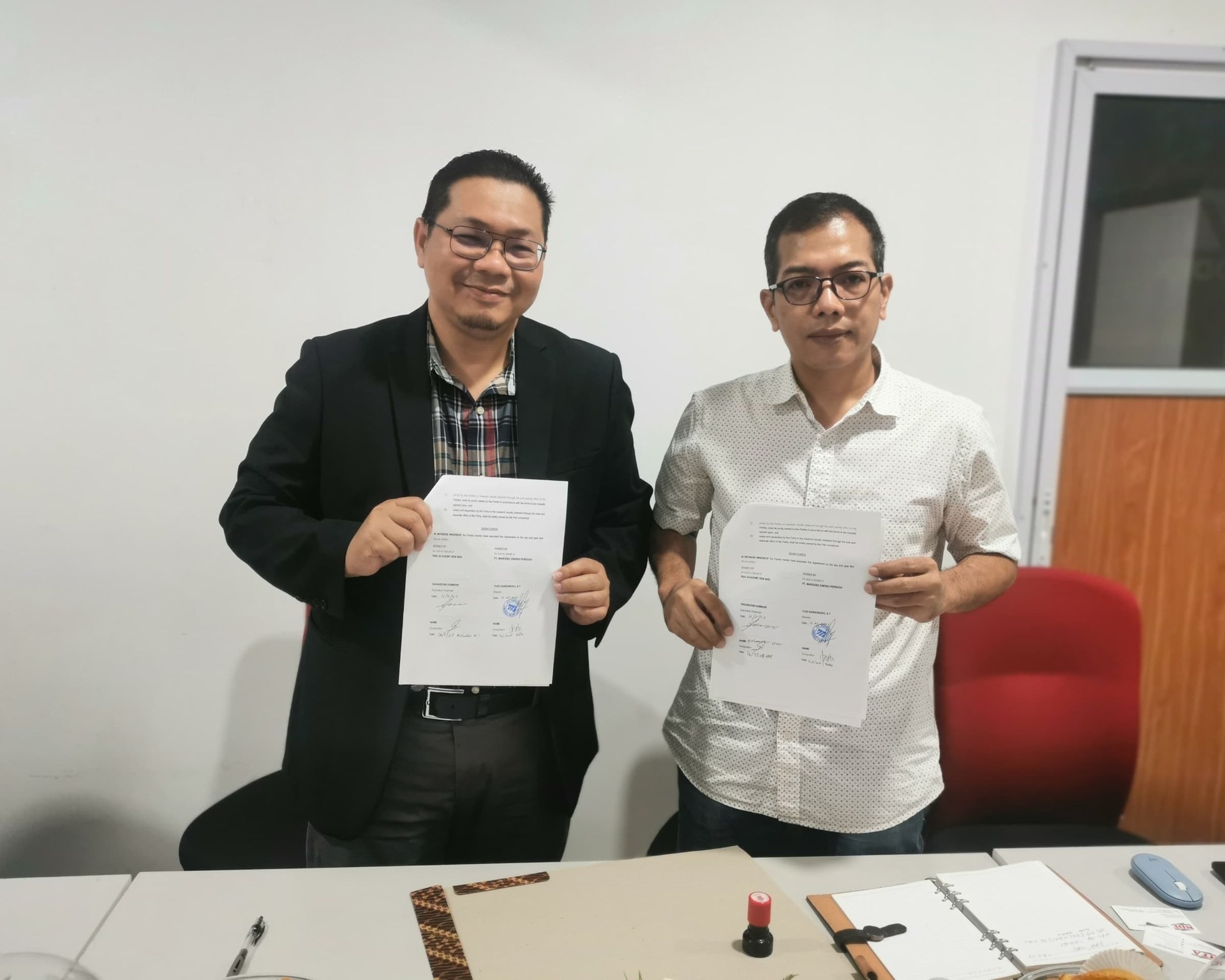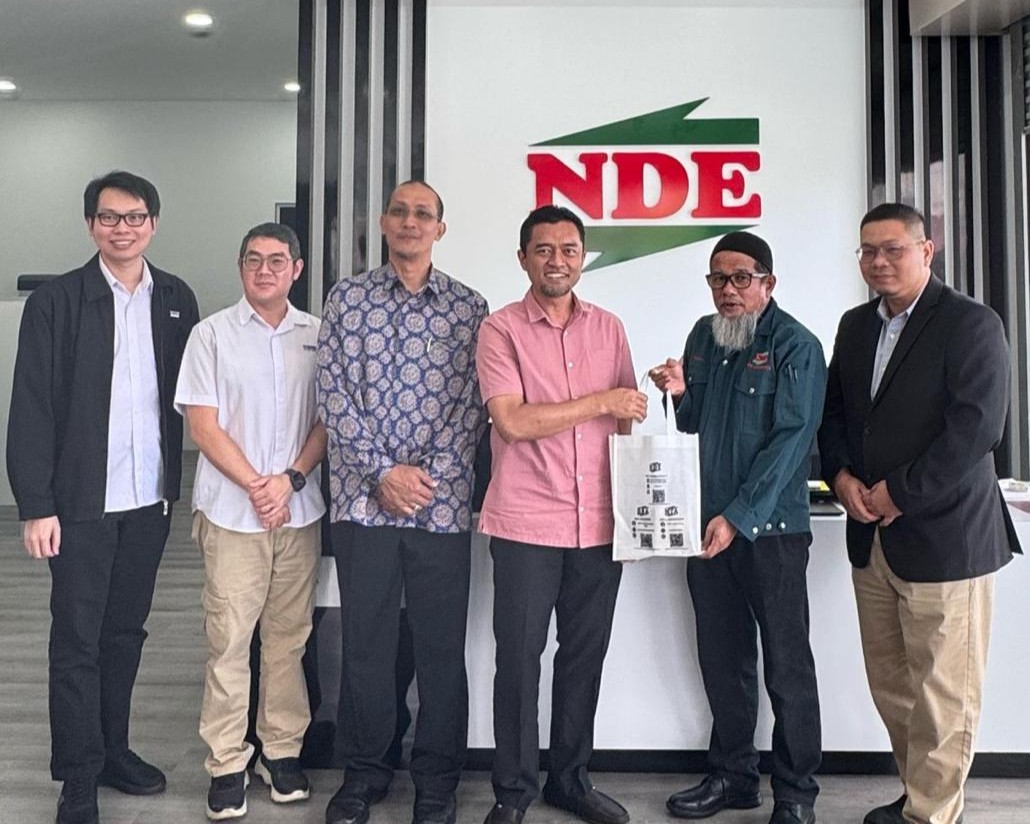Preparing Individuals for
Rewarding Careers Since Day One.
Since its establishment in 2009, RSA Academy is focused on
providing reliable certification schemes that are both
nationally and internationally recognized. We offer the best
training and professional development solutions customized
to our clients' needs.
Our courses enable inspection personnel of all levels to
perform their duties independently and professionally.
Earning these qualifications from a recognized training
provider ensures quality inspection and testing, thus boost
competitive advantage.
Our training are conducted at our office in Kemaman,
Terengganu; which is equipped with lecture rooms and
laboratories for practical exercises. Alternatively,
training can be delivered at your company premises.
RSA also provide extensive Level III NDT Consultancy
Services which help both new and existing players; ranging
from inspection planning, evaluation of collected data,
constructing and reviews of NDT written practices, and
professional third party witnessing. This will help in
ensuring compliance with industry standards.
Expand your potentials by getting in touch with us today,
where we can discuss how RSA can support your training and
certification requirements, and other corporate needs.



